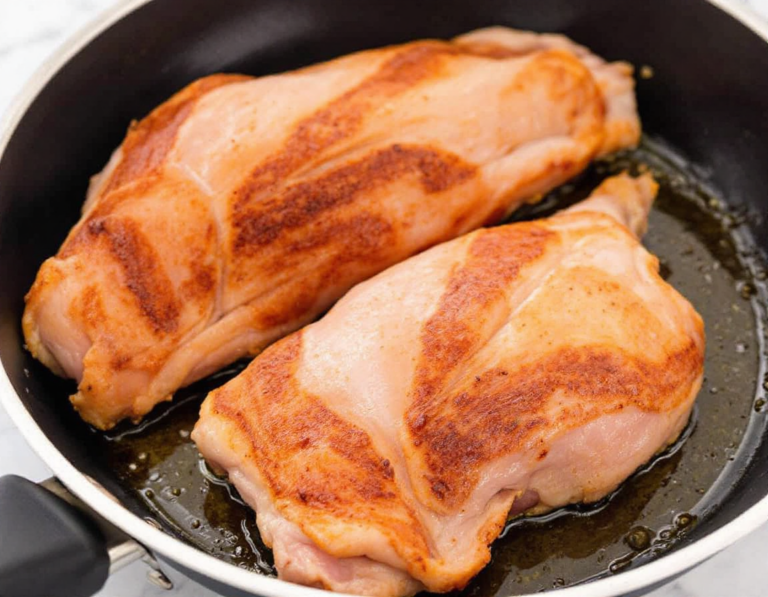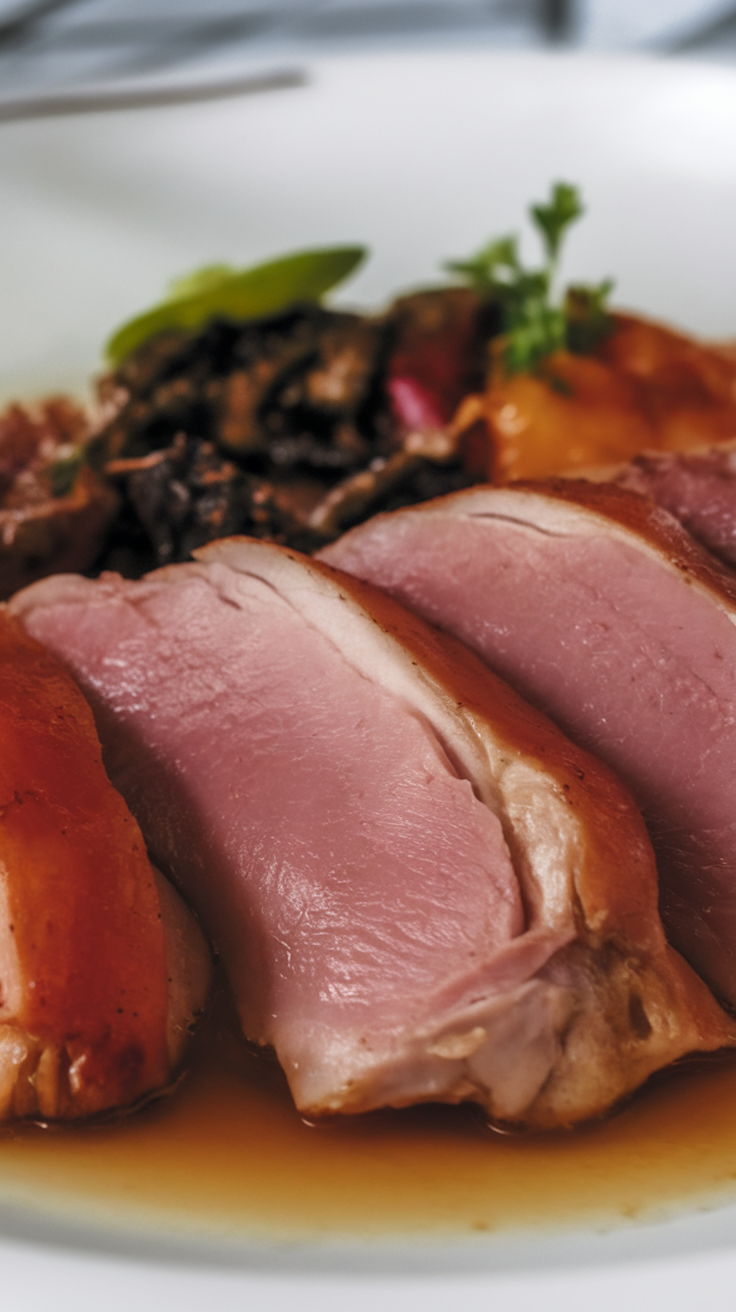When it comes to culinary indulgence, there’s something about duck that just feels. . .
extravagant. Think about it: the tender, juicy meat beneath a crispy, golden skin—it’s like the culinary equivalent of wearing your fanciest outfit on a Tuesday, just because you can.
This sous vide duck breast recipe delivers that luxurious experience with every bite, turning an ordinary dinner into something special. Have you ever experienced the magic of crispy skin crackling as you slice through it? If not, you’re in for a treat.
Steps
- Make shallow crosswise cuts on the skin of each duck breast, ensuring not to cut into the meat. Season the skin side with salt and the meat side with salt, pepper, and thyme. Place the seasoned duck breasts in a resealable plastic bag, remove air, seal, and refrigerate for 1 hour.
- Fill a large Dutch oven two-thirds with water and heat to 135°F (57°C). Use a candy thermometer to monitor the temperature and place a silicone hot pad at the bottom of the pot to prevent the plastic bag from touching it.
- Submerge the sealed plastic bag containing the duck breasts into the Dutch oven. Cook for 1 hour, occasionally moving the bag and adjusting the heat to maintain a steady temperature of 135°F (57°C).
- Remove the duck breasts from the bag and pat them dry. Generously season the skin side with salt again.
- Heat vegetable oil in a skillet over high heat. Place the duck breasts skin-side down in the hot skillet and cook for 5 minutes until the skin is golden brown and the fat has rendered. Flip the breasts and cook for another minute until the meat is lightly browned and still pink inside. Allow the duck to rest for 2 minutes before slicing and serving.

Ingredients
- 2 boneless duck breast halves (8 ounces each), with skin
- Salt, to taste
- Ground black pepper, to taste
- 2 teaspoons fresh thyme leaves
- 1 teaspoon vegetable oil
Nutritional Values
Calories: 354 | Total Fat: 22g | Saturated Fat: 6g | Cholesterol: 210mg | Sodium: 286mg | Total Carbohydrate: 0g | Dietary Fiber: 0g | Sugars: 0g | Protein: 38g | Vitamin C: 8mg | Calcium: 20mg | Iron: 6mg | Potassium: 10mg
FAQ
- What is the recommended internal temperature for cooking duck breast?
- The USDA advises that duck breast should reach a minimum internal temperature of 165 degrees F (74 degrees C) for safety, as measured with a food thermometer in the thickest part of the breast.
- Can I make this recipe without a sous vide machine?
- Yes, this recipe uses a stovetop method with a Dutch oven and a candy thermometer to maintain the water temperature, eliminating the need for a sous vide machine.
- How do I prepare the duck breasts before cooking?
- Make shallow crosswise cuts on the skin of each duck breast, season both sides with salt, pepper, and thyme, and place them in a sealed plastic bag to refrigerate for an hour.
- How do I achieve crispy duck skin?
- After sous vide cooking, pat the duck breasts dry and season the skin side with salt. Heat oil in a skillet over high heat and cook the duck skin-side down until the skin is golden brown.
- What are some serving suggestions for sous vide duck breast?
- You can serve the duck with sides like parsnip puree or a cranberry-orange relish for added flavor. Some people also enjoy pairing it with a sauce, such as an Orange Brandy glaze, topped with truffles if desired.
Tips
- Score the Skin Carefully: When scoring the duck breast skin, make sure to cut just the skin and fat, avoiding the meat. This will allow the fat to render effectively without drying out the meat.
- Monitor Water Temperature Closely: Use a candy thermometer to keep the water temperature steady at 135 degrees F (57 degrees C) while cooking. This ensures the duck breast cooks evenly and maintains a tender texture.
- Pat Duck Dry Before Searing: After removing the duck from the sous vide bag, pat it dry completely before searing. This step is crucial for achieving a crisp, golden skin.
- Rest Before Slicing: Allow the duck breast to rest for at least 2 minutes after cooking. This helps the juices redistribute, resulting in a more flavorful and moist final dish.
Equipment
- Candy Thermometer – To monitor and maintain the water temperature.
- Silicone Hot Pad – To keep the plastic bag from contacting the bottom of the pot.
- Heavy-duty Resealable Plastic Bags – To seal the duck breasts for cooking.
- Skillet – If you want to ensure you have a high-quality skillet for searing the duck.
